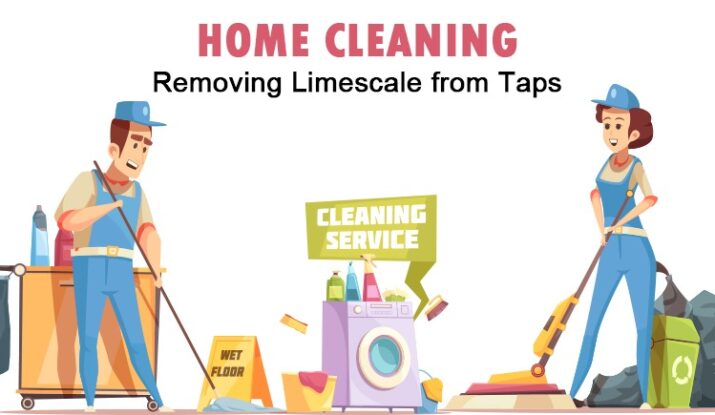Limescale is an unfortunate by-product in bathrooms that looks unhygienic, so how do you clean it?
The main reason people choose to remove limescale is that it can look terrible, especially if left and neglected for a long time, resulting in heavily stained appliances.
We have developed this guide to help you understand what limescale is, whether it’s dangerous, and how to remove it.
What is limescale?
The scientific answer is that limescale is a build-up of a hard deposit with a chalk-like appearance which mainly consists of calcium carbonate. It is usually left behind by hard water when it evaporates – water that has a high mineral count.
In most cases, you’ll find limescale inside kettles, hot water boilers, and pipes. Traditionally, it is found wherever there is warm water. When it comes to bathrooms, this will include taps, showerheads, and plugs.
Home Cleaning Tips: How to clean limescale?
There are various ways to remove limescale, these involve specially-made products or home-made solutions. So, if you don’t want to smell chemicals or want to be kinder to the environment, you can still remove limescale easily.
What will I need to remove limescale?
Going for home cleaning, you’ll need gloves, but you may also need the following:
- Lemon juice or full lemons
- White vinegar
- Bathroom cleaner
- Elastic bands
- Cotton wool
- Old and clean cloths
- Cup
- Baking soda
- Spray bottle
When using lemon juice, always wear gloves as it is citric acid.
How to remove limescale from taps
When it comes to cleaning taps to remove limescale, vinegar, or lemon works best outside of a chemical cleaner.
Removing limescale from taps comes in two parts – the levers and body as well as the water outlet. These are the areas most likely to see limescale form. For each one, they need to be in constant contact with a cleaner.
To remove limescale from the water outlet or spout, fill a cap with lemon juice or vinegar and position it over the spout. Ensure the outlet is submerged in it completely and fix the cap in place with either tape or an elastic band – then leave it overnight.
Lemon juice is best for tackling thicker, more stubborn limescale.
For the upper parts of your tap, soak cotton wool or cloth in either white vinegar or lemon juice and wrap it around the taps. If you want to be sure, secure it in place with an elastic band. Leave it for a couple of hours or overnight, depending on the amount of limescale.
You may need to lightly scrub the taps afterward to remove all the residue.
When using vinegar or lemon juice, bear in mind the type of tap you have. For plated taps – such as chrome or gold – don’t use vinegar as it can damage the finish.
How to prevent limescale from forming
The above home cleaning methods are all preventative measures that will stop limescale from forming, so regular home cleaning may mean deposits don’t come back.
Since limescale forms in a hard water environment, one step you could take is to add a water softener to your water supply.
You can buy a limescale preventer from markets that stop the build-up of limescale through hot and cold water systems.
An easier alternative to prevent limescale from building up is to wipe surfaces down when wet, just as you would prevent mold. On glass surfaces, like glass shower screens, wipe them completely dry after showering.


